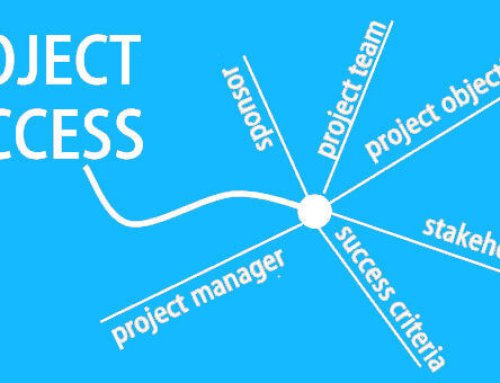Building a brand is no easy feat. It’s not just about having a logo, knowing your audience and creating nice-looking products or services—it’s also about being consistent and memorable in every way you interact with customers. Before you start building your brand, make sure you have a solid understanding of these key factors:
How do you define a brand?
A brand is more than just a logo or tagline. It’s the sum of everything you do, from how you interact with customers and employees to what products and services you offer. A strong brand can help attract new customers, improve sales results and increase profitability. But before we talk about how to build a brand, let’s first define what exactly it is:
A brand is the emotional connection that consumers form with products or services through repeated exposure over time. Brands make people feel good about themselves by satisfying their needs in some way (whether those needs are emotional or functional). For example: Nike shoes give athletes confidence; Apple computers make creative professionals feel like they’re part of something special; Coca-Cola makes everyone feel refreshed after drinking it!
What is your brand purpose?
Your brand purpose is the reason why your brand exists. It’s not just a mission statement or slogan, it’s not just a tagline, and it’s not even necessarily written down anywhere (though that can be helpful). Your brand purpose should be in your heart and mind as you go about creating products, services and experiences for customers. It’s what guides you when making decisions about how to build your business.
The best way I’ve found to explain this concept is with an example:
If you’re an author writing fiction books for children ages 8-12 then one way of thinking about your audience would be “I want kids who are between 8-12 years old.” But if instead we asked ourselves “Why do these kids buy my book?” we might find out something interesting: They buy my book because they want fantasy stories where characters face tough challenges but ultimately triumph over evil forces–and so do I! So now our target audience isn’t just “kids between 8-12 years old,” but rather anyone who shares our values when it comes down righting wrongs through hard work and perseverance under difficult circumstances (i.e., most people).
Who is your audience?
Who is your audience?
- Customers
- Target audience (the people who you’re trying to reach)
- Competitors, including direct and indirect competitors, as well as brands that are similar but not in the same space as yours. These can be used as case studies or examples of what works–and what doesn’t.
- Influencers–people who have a large social media following or write for publications that reach other audiences that may be interested in your product or service. They can help spread word about what you’re doing and grow awareness of the brand before it even launches!
The next step is thinking about how these different groups interact with each other: Do customers interact with influencers? Do influencers interact with competitors? If so, how?
Why do you exist?
- You need a reason for existing that is relevant to your audience. Your purpose should be unique and different from the competition, and it should be easy for people to understand. You also need commitment in order to achieve your goals and make them happen in real life.
Are you making content regularly?
You can’t build a brand without content. Content is what gets your audience to know, like, and trust you. It’s also the most direct way to convey your unique voice and personality.
Content should be engaging–it should grab people’s attention and keep them reading or watching until the end of the piece (or video). You want to create something that feels worth their time so they’ll come back for more–and maybe even tell their friends about it!
You want consistency in your content; if you publish once every two weeks with great stuff every time then people will look forward to seeing new things from you each time they visit one of your pages/sites/social media accounts etcetera…
How are you engaging with your audience on a consistent basis?
You should be engaging with your audience on a consistent basis. Social media, email marketing and newsletters are all great ways to do this. But if you want to get really creative, consider live events or creating content that people will find useful (like blog posts).
If you’re wondering what kind of engagement is right for your brand and where it fits into the bigger picture of building a brand, ask yourself these questions:
- What kind of engagement works best for our product/service?
- How can we ensure that all consumers get access to our content?
What’s unique about your product or service?
When you’re developing a brand, it’s important to understand what makes your product or service unique. The first step is to take a look at what the competition is doing. This can help you identify any gaps in the market and see if there’s an opportunity for you to fill them by offering something new and different.
If there are no competitors offering anything similar, then it might be worth considering whether there’s room for improvement on your own product or service–or whether there might be another way that you can differentiate yourself from others (for example through design).
How much do you know about the competition, and what are their weaknesses?
- Know your competition.
- Understand what they’re doing well, and what they’re not doing well.
- Identify their weaknesses and exploit them.
- Be aware of what the competition is doing to build their brand, and plan accordingly–or try something new!
Your brand needs to stand for something, and it needs to be known by the people who want to buy it.
Branding is the process of building a brand. It’s not just about the logo, it’s about everything from the experience of using a product or service to interacting with the company behind it.
Branding is a combination of many things:
- Who am I? What do I stand for? Why should anyone care about me? What makes me different from other companies in my industry? How can I communicate these messages in an engaging way that resonates with my target audience?
You don’t have time to figure out all these questions on your own; you need help understanding who your customers are and what they want from you so that you can build them into loyal fans who will buy more products/services from you instead of going elsewhere.
We hope this blog has helped you understand what it takes to build a brand and make it successful. It’s not easy, but if you have a clear vision for what your company stands for and how it can benefit others, then you’ll be well on your way!





